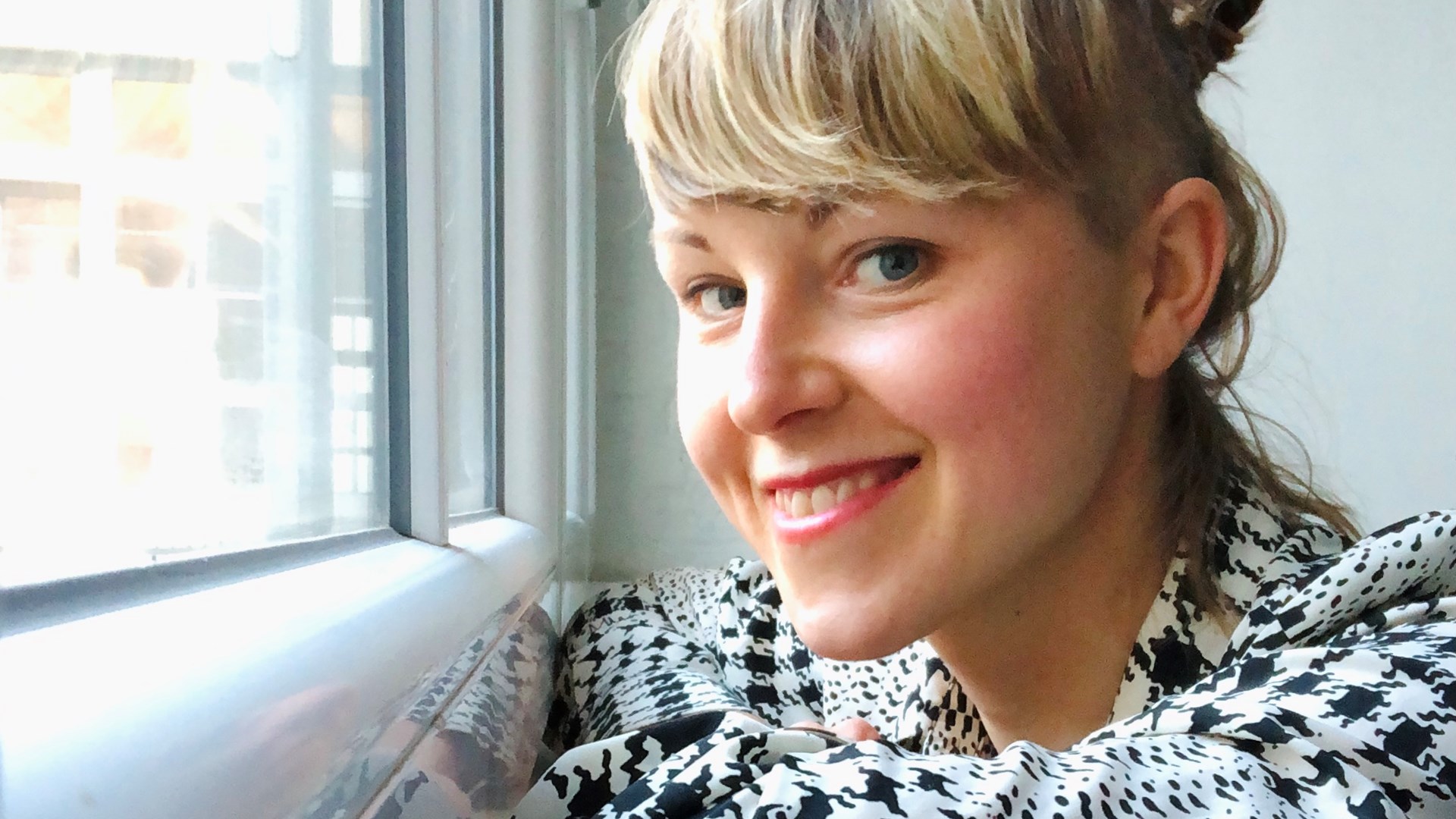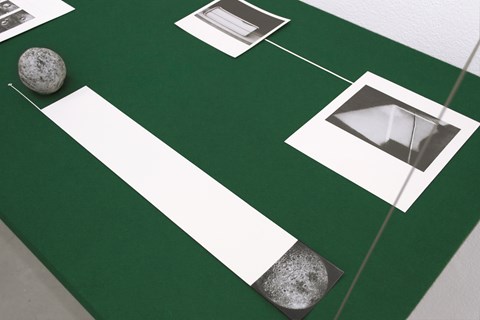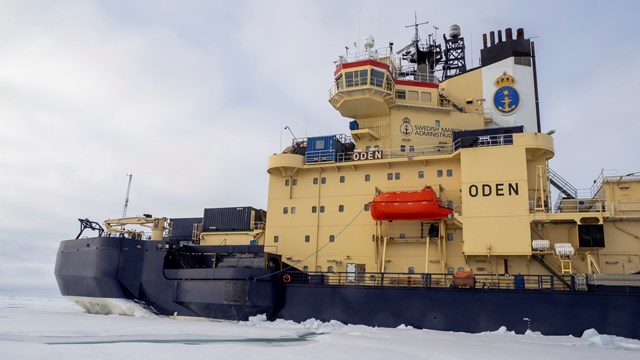"I pay attention to details and am alert to what is around me. Always with an eye for rocks, lines and dots."
 Visual artist Cecilia Cissi Hultman is looking for lines in all their forms. Photo: Private
Visual artist Cecilia Cissi Hultman is looking for lines in all their forms. Photo: Private
It's time to welcome an artist to a research expedition with the icebreaker Oden! The visual artist Cecilia Cissi Hultman will participate in ArcOP 2022 to the Arctic Ocean. She received the news while in Berlin.
"I am on a residency/scholarship for six months at the Künstlerhaus Bethanien in Berlin. When I got the call, I was at a fruit shop to buy ingredients for a (fruit)sculpture gift."
What was your first thought?
"I was very flattered to be chosen and smiled at the contrasts Berlin and boat, art residency and research expedition."
Contrasts and contradictions are an essential part of Cecilia Cissi Hultman's art. She describes herself as a visual artist with an interdisciplinary approach to drawing, language and space.
"I am a drawer at heart, preoccupied with lines in all their forms, as a kind of entrance to meaningful gestures and works. The challenge is to consistently achieve meaningfulness with small means and great precision. My method is often playfully searching, detail-oriented in movement between drawing, sculpture, video, text and installation."
"Throughout, I am observant and in constant relation to the nearby environment, where random tracks, languages and details are often allowed to reinforce or contradict each other in interesting ways. It is about various visual/philosophical/poetic reflections of the outside world. Sometimes in small pencil formats, sometimes in much larger installations."

A visual, philosophical and poetic project
Cecilia Cissi Hultman was born in 1985 in the Swedish city Sundsvall, where she also grew up. She has, among other things, studied at Konstfack, which is Sweden's largest university for arts, crafts and design. Art has led her to many different places and countries. Cecilia Cissi Hultman has worked in Austria, Lithuania, France, Norway, Finland and Iceland and has had exhibitions in Europe and the USA. But she has never been on board an icebreaker before.
"I have known about the artist programme for many years, and when I saw that it was time for a new expedition, it felt natural to apply. I have always been fascinated by how science examines, observes, and describes methodically and precisely. I'm also curious about that kind of work and living environment. A challenging experience, both personally and artistically."
"At the time of writing, I think that my work and my world of motifs will move in the direction of divisions and parries of various kinds, similar to Oden's task of taking care of ice floes."
What do you want to explore on board the icebreaker Oden?
"At the time of writing, I think that my work and my world of motifs will move in the direction of divisions and parries of various kinds, similar to Oden's task of taking care of ice floes. I want to focus on writing and collecting images that I later, in a shake-free environment, turn into drawings and sculptures or combine them in a printed matter where text, drawings and photos collaborate. I think, for example, of how to deal with an ice floe (hard, loose, confrontational, passive) in relation to the ease required to, for example, crack your breakfast egg. Likewise, how fragile ice can be. Or how a door sounds and moves when it is allowed to follow the sea's movement schedule when it's sailing in and out of its own fixed path."
"In other words, how the stiff, rigid, fixed handles the loose, open, empty and how you as a human keep away what threatens ‒ in the middle of what is completely loose, mobile. My project will be a visually, philosophically and poetically attentive project."
The bottom of the ocean ‒ a climate archive
During the ArcOP 2022 expedition, the icebreaker Oden will be in the Arctic Ocean around the southern Lomonosov ridge. Deep beneath the ocean floor hides historical layers of sediment that play a crucial role in our understanding of global climate change. The expedition's purpose is to take up two marine drill cores totalling 900 meters. Three ships will take part in the expedition: the Norwegian drilling vessel Dina Polaris, the Russian icebreaker Viktor Chernomyrdin and the Swedish icebreaker Oden. Oden's role is to protect Dina Polaris from ice floes together with Viktor Chernomyrdin. The drill cores can help scientists explain how the climate has changed over 50 million years.
How do you see being a part of this kind of research expedition?
"Exciting! The mere thought of being able to relate so concretely to time ‒ in that quantity, length ‒ feels powerful. It immediately makes me think of the fact that man always needs to be in relation to the very concrete, regardless of level or form of science. This is where art and research meet. Through knowledge, curiosity, method, choice of material and execution in search of a goal that along the way inevitably involves some uncertainty."
"I can also mention that I often return to time and geology. For example, I have drawn cancer cells, volcanic ash, drill cores and lunar craters as a way to very concretely address the hard to reach, via layers of pencil. So a 900-meter long drill core obviously feels interesting."
"I am curious about what everyday life in such a limited space looks like. Likewise, what my creativity can generate under that kind of specific circumstances. I also look forward to noting how time and body feels at sea and what kind of meetings will occur on board."
What are you most looking forward to?
"I am curious about what everyday life in such a limited space looks like. Likewise, what my creativity can generate under that kind of specific circumstances. I also look forward to noting how time and body feels at sea and what kind of meetings will occur on board. The best conversations I have had about what I do, how I think and work, have been with people with completely different professions. That leads to other kinds of conversation, questions and implications that find similarities and bridges to completely new dimensions. I want to end by thanking the Swedish Polar Research Secreatariat for this opportunity!"
Facts
The artist programme
The Swedish Polar Research Secretariat has a long tradition of involving artists in research expeditions in the polar regions. The secretariat's artist programme started in 1988, and over the years, 36 artists have participated in about 20 expeditions, mainly with the icebreaker Oden.
The expedition ArcOP 2022
The Swedish Polar Research Secretariat is conducting the international research expedition Arctic Ocean Paleoceanography (ArcOP 2022) on behalf of the European Consortium for Ocean and Research Drilling (ECORD) and in collaboration with the company Arctic Marine Solutions.

